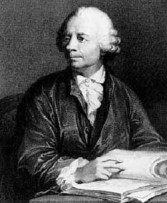Algebraic Number Theory |


|
Euler's work on the solution to Diophantine equations marks the early history of
algebraic number theory. A technique for finding integer solutions of equations
of the form
was one particular problem considered by Euler. After developing a method of solution, he specialized by setting a = 1, b = 2, and y =
|
|
to solve the equation. (This was very bold of Euler since most mathematicians of that era were reluctant to use complex numbers in their research). He made the following two assumptions:
(1) If (2) If u and v are relatively prime integers, then u + Under the above assumptions, Euler established that
so that
but there were problems with his approach since there were several gaps and errors in this reasoning. In fact, in this particular area of number theory, Euler did not justify many of his assumptions, and stated many claims without proof. A deeper knowledge of factorization in algebraic number fields is required for a more complete treatment. However, this very subject is still of great research interest today. |